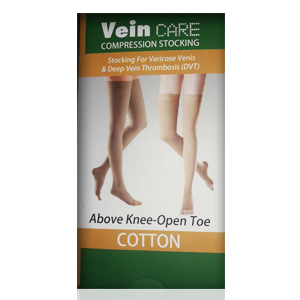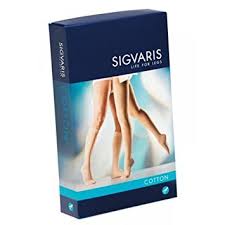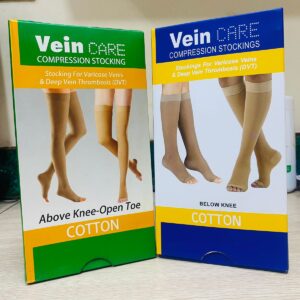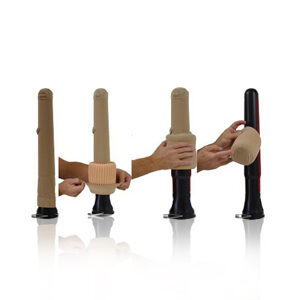Vein Care Stocking
Vein Care Stocking
Original price was: ₹4500.₹3825Current price is: ₹3825.
Vein Care Thigh Length Stocking
Vein Care Compression stockings apply external pressure on your leg veins. Vein care compression stockings also reduce the pain and discomfort of varicose veins.
The Benefits of Compression Stockings for Varicose Veins
Vein-related problems are becoming one of the more common chronic conditions in the United States.
About 40 percent of the US population may be affected by chronic venous insufficiency, a condition that can lead to more serious issues, including varicose veins. If you have chronic venous insufficiency, you typically experience heavy legs and swollen ankles at the end of the day. You may also experience pain or night cramps in your legs.
These symptoms occur when the valves in your veins become damaged, and it becomes difficult for blood to move up your legs toward your heart against gravity. The blood then starts pooling around your ankles and in your calves. With time, malfunctioning valves can result in varicose veins — twisted, rope-like veins of bluish or purple color, visible underneath your skin.
If venous conditions and related symptoms affect you, compression stockings might help.
Why you should use compression stockings -:
Compression stockings (or socks) are a special kind of elastic hosiery that supports healthy blood circulation and helps prevent a variety of health conditions, including:
The pressure that these stockings put on your ankles and legs compresses the surface arteries and veins, helping the vein valves to function properly and blood to flow back to your heart without obstructions.
It’s extremely important to put on compression stockings in the morning, before you lower your legs and get out of the bed.
Sleeping in a horizontal position makes your vein valves function more effectively than when sitting or standing. In a vertical position, gravity kicks in and blood flow is compromised due to the damaged valves. That’s why your ankles and calves usually feel fine in the morning, and get swollen and heavy as the day progresses.
Putting on compression stockings in the morning will keep the valves in the right position to support healthy blood circulation in your legs during the day.
If you’ve already developed a vein-related condition, compression stockings can help alleviate symptoms such as:
- swollen ankles
- heavy or aching legs
- fatigue and pain
- restless legs
- night cramps
How to choose the right size
Choosing the right size for compression stockings is crucial to feel as comfortable as possible and to take advantage of all the benefits of the elastic hosiery. To ensure the proper fit, you’ll need to take measurements. Here are a few tips:
- Take measurements of your legs before you get out of bed in the morning or even lower your legs.
- For knee-high socks, measure the narrowest part of your ankles and the widest part of your calves. Then sit up on your bed, placing your feet on the floor and bending your knees so your legs form a 90-degree angle. Take the measurement between the bent knee of each leg and the floor.
- For thigh-high stockings, start the same as taking measurements for knee-high socks. Continue by standing up and measuring your thighs under your buttocks. Finally, measure the distance between your buttocks and the floor.
Taking these measurements can sometimes be tricky, so don’t be afraid to ask for help or talk to your doctor when in doubt.
How to take care of compression stockings
Taking proper care of your compression stockings isn’t difficult. But there are a few things to keep in mind to make them last as long as possible without losing their strength and benefits:
- Use cold or mild temperature water.
- Hand-wash your stockings instead of using a washing machine.
- Don’t use fabric softener — only soap or mild detergent.
- Never use a dryer. Hang your stockings to dry instead.
Compression socks and stockings might not always prevent varicose veins from developing. However, they can function as a great supportive mechanism for a healthy blood flow and keep bothersome symptoms at bay, especially when worn on a long-term basis.
You should always discuss using compression stockings with your doctor.
| Size | No. 1 – No. 7 |
|---|





